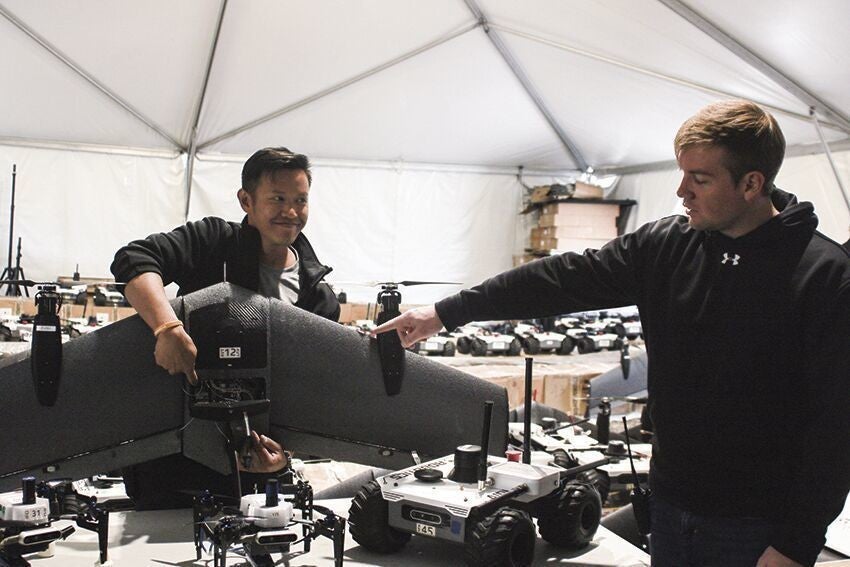DARPA Runs Final Test for OFFSET Program Drone Swarm
On December 9, the US Defense Advanced Research Program Agency (DARPA) announced it had carried out the final OFFSET program field experiment at Cassidy Combined Arms Collective Training Facility (CACTF) in Fort Campbell, Tennessee. Over 100 drones and robots were employed as part of the test.
Launched in 2017, the OFFensive Swarm-Enabled Tactics (OFFSET) program aims to develop an ecosystem of unmanned ground and aerial vehicles available to small infantry units that can be deployed as swarms of up to 250 units towards the accomplishment of various tasks in complex, urban terrain. The final goal is the development of a system of “swarm tactics” responsive to human commands enabled through algorithms. The whole swarm would fall under the command of a single team consisting of a “swarm commander” and an operator.
The project’s manager, Timothy Chung, was very positive about the advancements made over the past four years and about the test itself. He stated that the test and wider program demonstrated that “these swarm capabilities are rapidly nearing availability for future operations”. Chung also emphasized that the program developed not just advanced capabilities but also a swarm capability community.
John Watson, who leads the Fort Campbell Directorate of Plans, Training, Mobilization and Security, provided additional details on what the capabilities demonstrated by the field test will mean for future soldiers.
“If a unit is coming up into a densely populated urban area, they could use a swarm of unmanned aircraft systems to go and do a reconnaissance. Instead of having to send soldiers in there and spend manpower and other resources, you can send your drones in there to do that reconnaissance and validate threats. […] To do a reconnaissance of Cassidy would probably take a company plus of soldiers to do, or a battalion minus, whereas if this technology is fully developed, one soldier is all it takes to control the swarm and do the reconnaissance. And one of the future technologies they’re talking about is being able to pair human and swarm teaming and use part of the swarm to breach a door, so if you think there’s a threat in the building you can use them to breach the door instead of a soldier.”
Northrop Grumman Mission Systems and Raytheon BBN Technologies participated in the test as Swarm System integrators; their role was to develop open architecture which enables the swarm operations concept. Sentien Robotics and Johns Hopkins University Applied Physics Laboratory, meanwhile, demonstrated platforms that can be integrated as part of the swarm. The Michigan Tech Research Institute virtually demonstrated new “acoustic spoofing payload and see-through-wall sensing payload capabilities” which are expected to be further tested in early 2022.
The DARPA release is available here.

